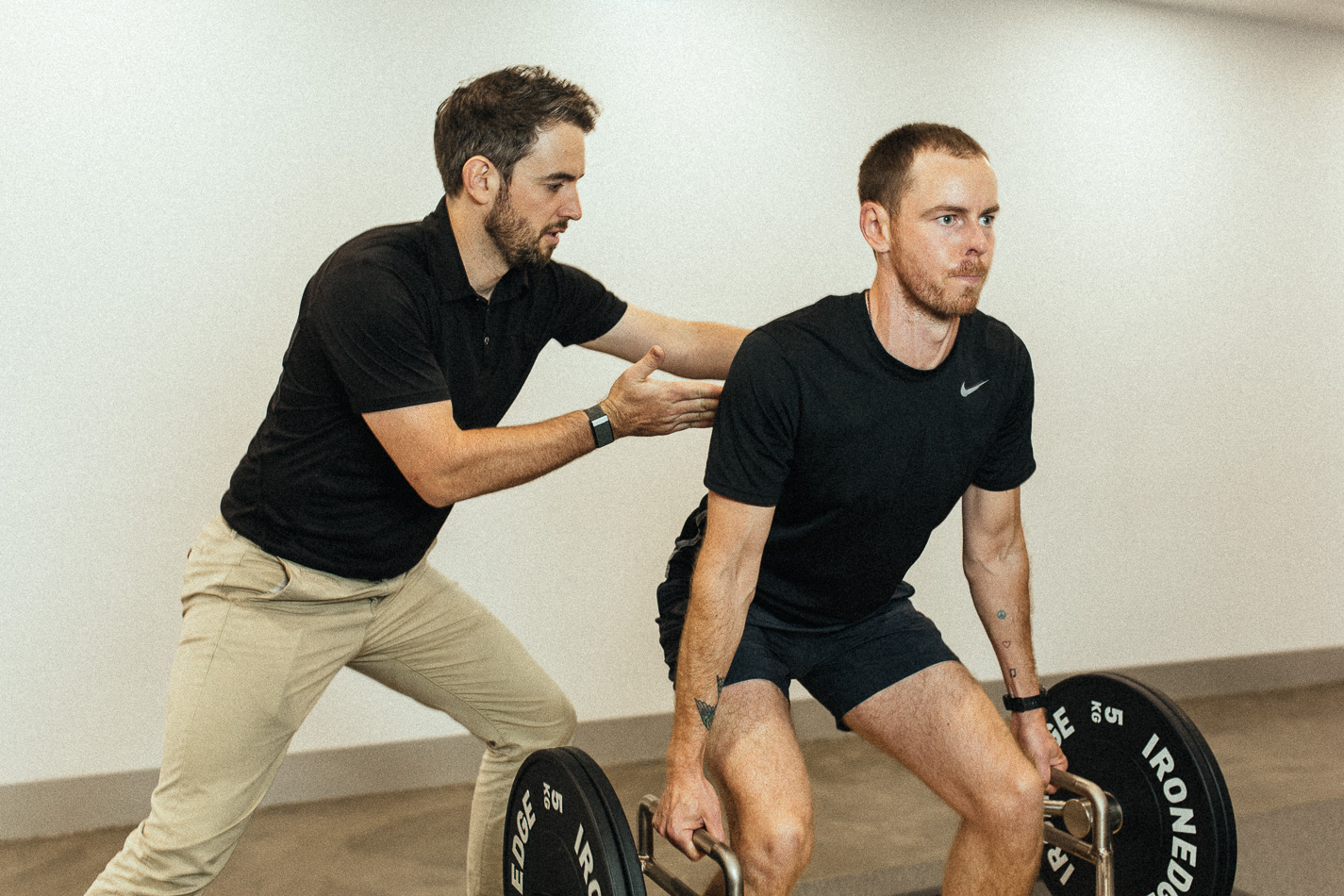The Range Physio Deadlift Guide
Part 1: Learning the Hip Hinge
One of our go to exercises for building strength following an episode of low back pain and other injuries is a deadlift. Deadlifts are a great way to restore movement after a back injury and to build up strength in key muscles of the legs, trunk and arms. Specifically a good deadlift will target your posterior chain muscles which is a group of muscles that includes the calf, hamstrings, glutes, latissimus dorsi and erector spinae. It can be easy to remember by thinking “Back, Butt and Hammies”.
We will usually introduce deadlifts into your rehab once acute lower back symptoms are settled and you are beginning to move and feel better. It is important that this box is ticked before progressing to strength training. We subscribe to the theory of getting on top of pain and dysfunction before adding strength training into the mix.
The key to a good deadlift is a movement called a hip hinge. A hip hinge involves a deep movement at the hips with minimal movement of the lower back and minimal knee bend.

Learning how to Hip Hinge
It can be difficult to perform this movement after issues like back or hip injuries due to pain, tightness and altered movement patterns. Here are some of our favourite ways to retrain the hip hinge movement to get you back to deadlifting well.
- High kneeling hip hinge: A no equipment option to groove the hip hinge pattern. Think about folding at the hips and then driving forward.
- Stick: A great way to learn how to maintain a good spine angle. Aim to maintain contact with the pole at 3 points of contact throughout the movement: at the head, middle of the back, and tailbone
- Edge of box: Giving you an external target to hit can be helpful to get the hip hinge down pat
- Kettlebell behind backside: A way to begin adding load whilst encouraging a deeper hip movement. Think about poking your bottom out behind you.
- Cable assisted hip hinge: If you have access to a cable maching then this is a nice option to develop proper technique. Also a great way to begin adding more load to the movement



